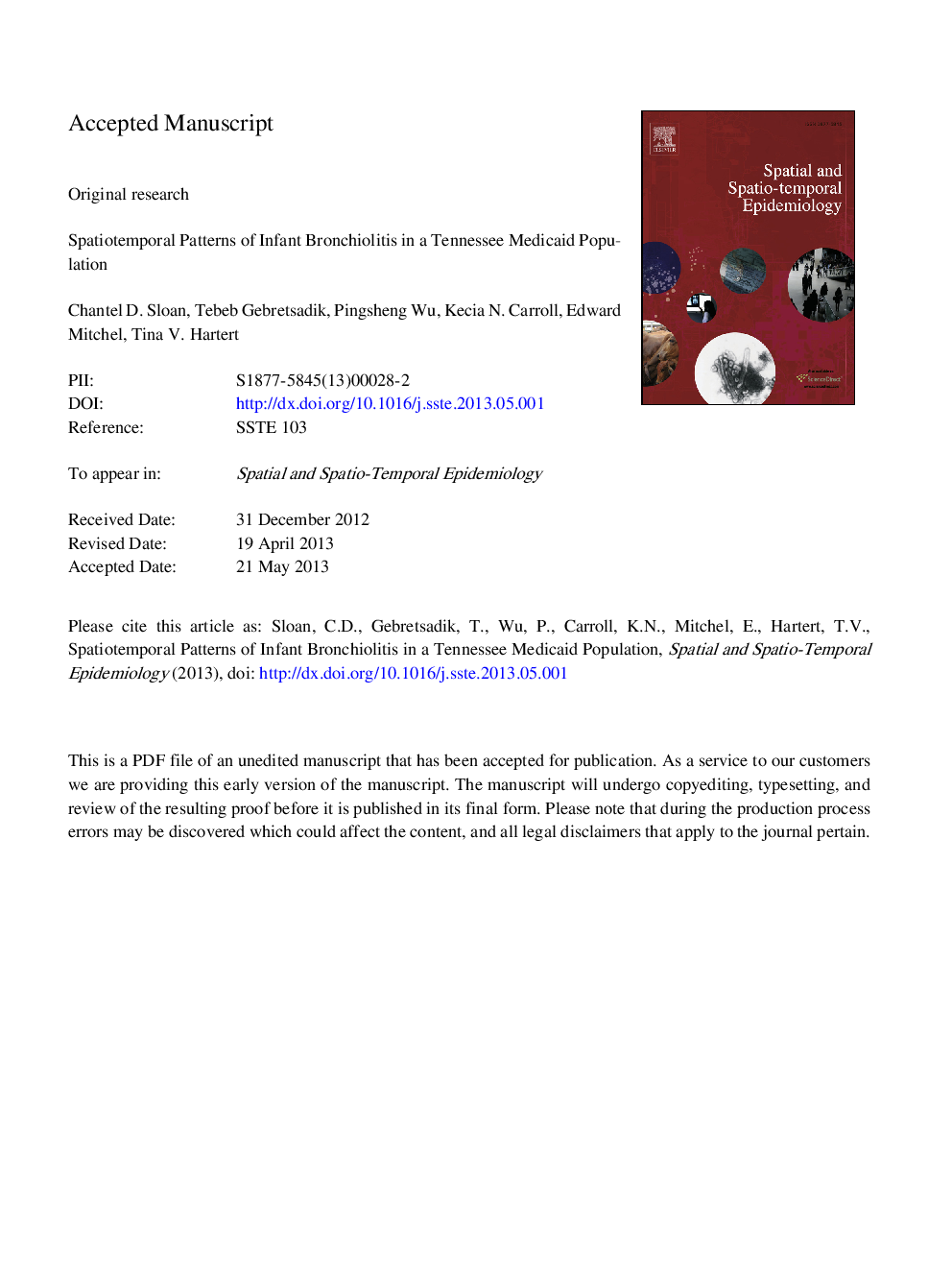| Article ID | Journal | Published Year | Pages | File Type |
|---|---|---|---|---|
| 7496202 | Spatial and Spatio-temporal Epidemiology | 2013 | 22 Pages |
Abstract
Respiratory syncytial virus (RSV) is a major cause of worldwide morbidity and mortality in infants, primarily through the induction of bronchiolitis. RSV epidemics are highly seasonal, occurring in the winter months in the northern hemisphere. Within the United States, RSV epidemic dynamics vary both spatially and temporally. This analysis employs a retrospective space-time scan statistic to locate spatiotemporal clustering of infant bronchiolitis in a very large Tennessee (TN) Medicaid cohort. We studied infants less than 6Â months of age (NÂ =Â 52,468 infants) who had an outpatient visit, emergency department visit, or hospitalization for bronchiolitis between 1995 and 2008. The scan statistic revealed distinctive and consistent patterns of deviation in epidemic timing. Eastern TN (Knoxville area) showed clustering in January and February, and Central TN (Nashville area) in November and December. This is likely due to local variation in geography-associated factors which should be taken into consideration in future modeling of RSV epidemics.
Related Topics
Health Sciences
Medicine and Dentistry
Public Health and Health Policy
Authors
Chantel D. Sloan, Tebeb Gebretsadik, Pingsheng Wu, Kecia N. Carroll, Edward F. Mitchel, Tina V. Hartert,
